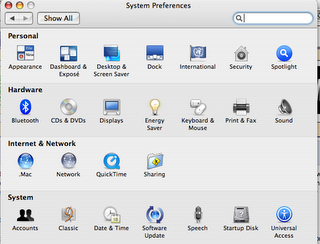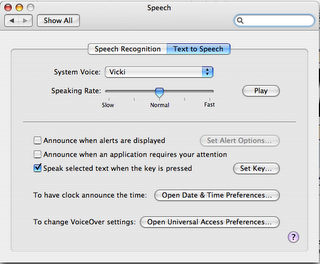In his introduction to Grandin's 'Thinking in Pictures', Oliver Sacks writes: "What is remarkable is that Temple, now in her fifth decade, has developed some genuine appreciation of other people and other minds ..."
New cognitive capabilities in late middle-age. We're not used to thinking that way. We think of brains pretty much peaking around age 25, then entering a long decline offset by learning and experience. That may be so for neurotypical brains, but what about the injured brain? Might healing take place into the third, fourth and fifth decades?
A tantalizing thought. It's long been noted that the "personality disorders" (the term is archaic, it's likely they are fundamentally developmental disorders affecting social functions) tend to improve in middle-age. Is the brain continuing to route around damaged subsystems, slowly healing over time?
Other clues have emerged from brain injured patients who show a slow healing over years and decades, migrating from stimulus response to communication attempts to social interaction to self-awareness ... (emphases mine)
Studying a Brain Healing From 19 Lost Years - New York Times
... Mr. Wallis, 42, wears an open, curious expression and speaks in a slurred but coherent voice. He volleys a visitor's pleased-to-meet-you with, "Glad to be met," and can speak haltingly of his family's plans to light fireworks at his brother's house nearby. For his family, each word is a miracle. For 19 years — until June 11, 2003 — Mr. Wallis lay mute and virtually unresponsive in a state of minimal consciousness, the result of a head injury suffered in a traffic accident...
... In a paper to be published on Tuesday, researchers are reporting that they have found strong evidence that Mr. Wallis's brain is healing itself, by forming new neural connections since 2003.
The paper, appearing in The Journal of Clinical Investigation, includes a series of images of Mr. Wallis's brain, the first such pictures ever taken from a late-recovering patient...
..."We read about these widely publicized cases of miraculous recovery every few years, but none of them, not one, has ever been followed up scientifically until now," said Dr. Nicholas Schiff, a neuroscientist at Weill Cornell Medical College in Manhattan and the senior author of the new imaging study...
... His mother, Angilee Wallis, said: "He is starting to learn things now. That right there is new."
In recent weeks, she said, he has also shown hints of self-awareness, alluding to his disabled condition for the first time.
... Terry Wallis was lanky 19-year-old back in 1984, with a gift for elaborate pranks and engine work, when he and two friends skidded off a small bridge in a pickup truck, landing upside down in a dry riverbed. The family never found out exactly what happened, and the crash left their son alive but unresponsive, breathing but immobilized, there but not there, his father said. Terry Wallis showed no improvement in the first year, and doctors soon pronounced him to be in a persistent vegetative state and gave him virtually no chance of recovery, his parents said.
About 52 percent of people with traumatic wounds to the head, most often from car accidents, recover some awareness in the first year after the injury, studies find; very few do so afterward.
But at some point after his accident, probably within months, Mr. Wallis, a mechanic before his injury, entered what is called a minimally conscious state, Dr. Schiff said....
... In 2004, Dr. Schiff contacted the family, asking if they would allow their son to be studied. He helped arrange to have the Wallises flown to New York in April of that year, and again 18 months later, for brain scanning. A research team from New York, New Jersey and New Zealand spent more than a year analyzing the results, comparing them to images from healthy brains and from another minimally conscious patient who had not recovered.
Using a novel technique that allows researchers to gauge the direction and density neural fiber growth, they saw evidence of new growth in the midline cerebellum, an area involved in motor control, as Mr. Wallis gained strength and range in his limbs. Another area of new growth, located along the back of the brain, is believed by some experts to be a central switching center for conscious awareness.
The daily exercises, the interactions with his parents, his regular dose of antidepressant medication: any or all of these might have spurred brain cells to grow more connections, the researchers said...
There's a growing consensus that there are 'step functions' between coma and what we consider "full" consciousness. Arousal precedes communication precedes self-awareness. We are beginning to identify a few of the key subsystsems [1] that enable "selfhood". All fascinating, but this story also strengthens the case for decades long healing of injured brains, with improvements well into middle-age.
What are the lessons for autism and other developmental disorders? If we consider these as profound disorders of brain development, with a clinical presentation that is the result of injury and and the healing response to injury, is it not reasonable that we should see healing well into adulthood and middle-age? If we take this approach, how would we change management of autistic adults? Might those who are quite disabled at age 20 be able to find work at age 30? There's much research to be done, and little money to pay for it. Perhaps we can interest Mr. Buffett ...
[1] An eccentric genius I once knew (college roommate) told me @1981 that consciousness was mediated in part by components of the brain speaking to themselves through muscle and action. He was also into 10-12 dimensional physics around the same time. He had quite a long healing period himself, but that's another tale.
PS. The NYT journalist is perceptive and sympathetic, pointing out that Mr. Wallace's family has gained little from their media moments and mentioning the existence of a trust fund seeking donations.
Update: I forgot to
comment on the antidepressant use.


